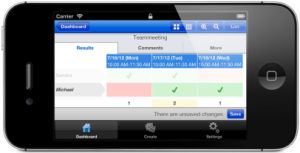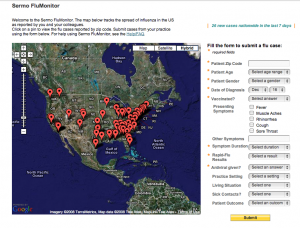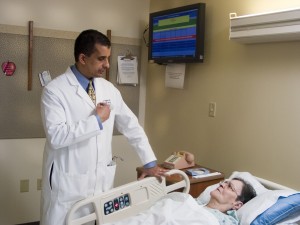We had previously featured an article on this site on the Smart patient room innovation at the Univ. of Pittsburgh Medical Center. Since, then we have talked to David Sharbaugh(DS), the leader of the smart room project and, a senior director at UPMC’s center for quality improvement and innovation and, Lucy Thompson(LT) one of the team members.
Today we bring you this exclusive interview.
What is the vision behind the smart room project ?
DS: We believe this technology will enhance patient safety, allow clinicians to spend more time at the bedside, simplify the jobs of health care workers and improve overall patient satisfaction
Who are the people behind the smart room?
DS: The core development team consisted of 5 people. Working anywhere from part time to full time to complete most of the development. In addition, over the past six months a team of clinicians and medical technologists have worked on this.
Where does the ultrasound technology for Smart Rooms come from ?
DS: the system uses ultrasound tracking devices to identify the numerous caregivers whom a patient might encounter on any given day. UPMC used Sonitor technologies, as the vendor for buying the ultrasound tracking devices.
How much did it cost to build the smart room system?
DS/LT: Since it was internally developed, it mainly cost UPMC man-hours (or FTEs in health care parlance). But, the total cost to the system would be approximately $2 per patient/day.
What clincal metrics does smart room system impact?
DS/LT: We are currently still compiling the metrics and observing the impact, but it is estimated that this system has reduced the time spent searching for allergies, demographics, since there is a visual cue provided to the care giver on the items that need to be completed. Medication safety is expected to impacted and patient safety, and, fall rate are some other metrics that are expected to improve. Currently, smart rooms are in the medical surgical floor.
How long did it take to train staff on this system?
LT/DS: There was minimal training for this, since the screen interfaces that staff and, physicians need to use are very intuitive.
Future enhancements to the Smart patient rooms system.
The Smart Room went live in early October and is being tested in six patient rooms at the UPMC Shadyside campus .They, told us that they are currently working on releasing the second version. The new version would include code information that will automatically display to the relevant care giver when a code is called.
In addition patient will be able schedule tests, get test results, and other information. Another possible enhancement is informative emails to patients!
We think this is innovative and will keep bringing you more information on future enhancements. So keep watching this space.


